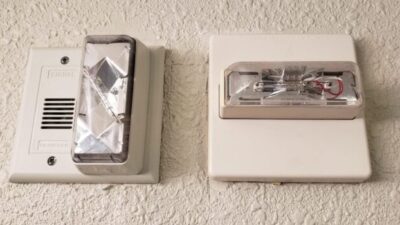Visitors at the new $49 million Rothwell-Brewer Student Recreation Center Complex at the University of Missouri in Columbia might be in awe of one of the nation’s top five recreation projects and Missouri’s largest aquatic complex.
But what they might not be aware of is the equally impressive behind-the-scenes energy savings that the team of architects, consultants and engineers built into the state-of-the-art project, expected to save the university millions of dollars in operating costs over the life of the center’s dual natatoriums.
The team consisted of consulting engineering firm, McClure Engineering Assocs., St. Louis; architect Hastings + Chivetta Architects Inc., St. Louis; commercial pool consultant, Councilman/Hunsaker Associates, St. Louis; and mechanical contractor, J. Louis Crum, Columbia, Mo.
Instead of accepting just a conventional economizer to take advantage of approximately 1,500 hours of cooler outside air during the spring and fall seasons, for example, McClure specified energy saving configurations in each of the five commercial dehumidifiers supplying the competition pool and leisure pool natatoriums. “We took a very active approach in saving energy throughout the facility and we were able to make some of the most significant reductions with the specification of custom natatorium mechanical equipment,” said Keith Esarey, P.E., principal; who teamed up with Phil Sutherlin, a former McClure principal who now performs consulting services, and Don Eschelbach, P.E., the project’s lead mechanical engineer.
The custom manufactured equipment configuration by indoor air quality manufacturer Dectron , Roswell, Ga., places 4,100-cfm (minimum code) and 22,900-cfm (purge) exhaust fans before the evaporator coil, and relies solely on the supply air fan to re-circulate natatorium air during unoccupied hours at a significantly reduced energy rate. The minimum exhaust fan operates only during occupied periods, as opposed to a conventional economizer, which operates a full-size return fan in conjunction with the 24/7 supply fan.
McClure’s configuration specification is capable of introducing 100% outside air to purge the space effectively during super-chlorination periods. Splitting the two exhaust fans makes each dehumidifier more efficient with both net sensible cooling and fan operation. In comparison to conventional economizer operation, the resultant annual fan energy savings from the 37,800-sq.-ft. competition natatorium’s four dehumidifiers is $62,000 plus another $14,400 for the 8,000-sq.-ft. leisure pool’s single dehumidifying unit.
The technology allows smaller compressors than on comparably sized dehumidifiers, thus saving energy while delivering equal moisture removing capacities. When combined with a glycol “smart saver” option that recovers heat from exhaust air to preheat or pre-cool outdoor air for space heating/cooling, the large and small natatoriums save an additional $46,000 and $12,000, respectively, in annual compressor operation and air heating savings.
All totaled, McClure’s specification saves the project more than $130,000 in annual operating costs and millions of dollars over the life of the facility.
Equally innovative is Hastings + Chivetta’s architectural design of the37,800-sq.-ft. natatorium—the larger of the two separate natatoriums in the five-phase project which included the expansion, renovation and restoration of the neighboring 100-year-old Rothwell Gymnasium and 76-year-old Brewer Fieldhouse. Hastings + Chivetta literally designed the competition area with a 50-meter pool, 10-meter diving well and 1,000-seat spectator area inside the addition to the fieldhouse.
McClure’s Esarey, an experienced indoor pool engineer with over 15 McClure natatorium projects to his credit, had considered the installation savings associated with one large unit, but eventually decided to divide the dehumidification load into four units for better redundancy. Also, one large unit would have complicated the air distribution design, which is divided into zones supplied by each unit. Four units also allowed the ductwork size to stay below the 48-inch diameter threshold, which is a National Fire Protection Assn. (NFPA) code related to sprinkler system placement.
All air distribution is from ceiling-hung ductwork, because the preferred method of adding under-deck air distribution was physically impossible in both the Rothwell and Brewer buildings retrofits because of existing foundations.
Another energy saving option McClure employed is recovering compressor heat to provide 100% free pool water heating. As a backup to the pool water heating, McClure also specified exchangers from Bell & Gossett , Morton Grove, Ill. These are three 2,000-Mbh heat exchangers fed by the building heating water system, which in turn is supplied by the campus central steam plant. Heat exchangers were also used as secondary or primary pool water heating for auxiliary vessels such as the club and competition warm-up spas.
To supplement the campus’ central plant chilled water system, McClure also specified two 2,000-ton absorption chillers from McQuay , Minneapolis, Minn., for the project. Throughout the gyms, offices, fitness rooms and other areas outside the natatoriums, McQuay air handlers and variable air volume (VAV) boxes supply heating and cooling.
McClure’s design also saves significant energy while simultaneously providing air comfort to the 1,000-seat spectator section. The large 7,000-sq.-ft. area uses a supplemental chilled water cooling coil in a Dectron unit that supplies cooler, dehumidified air to spectators via a single duct run. “Seating areas are typically treated with the same set points as the rest of the natatorium, which means an elevated area is receiving approximately 87
The Rothwell-Brewer project is the largest recreation project in the history of Missouri higher education and will undoubtedly influence future natatorium designs in the 21st Century especially in light of growing energy saving demands.



